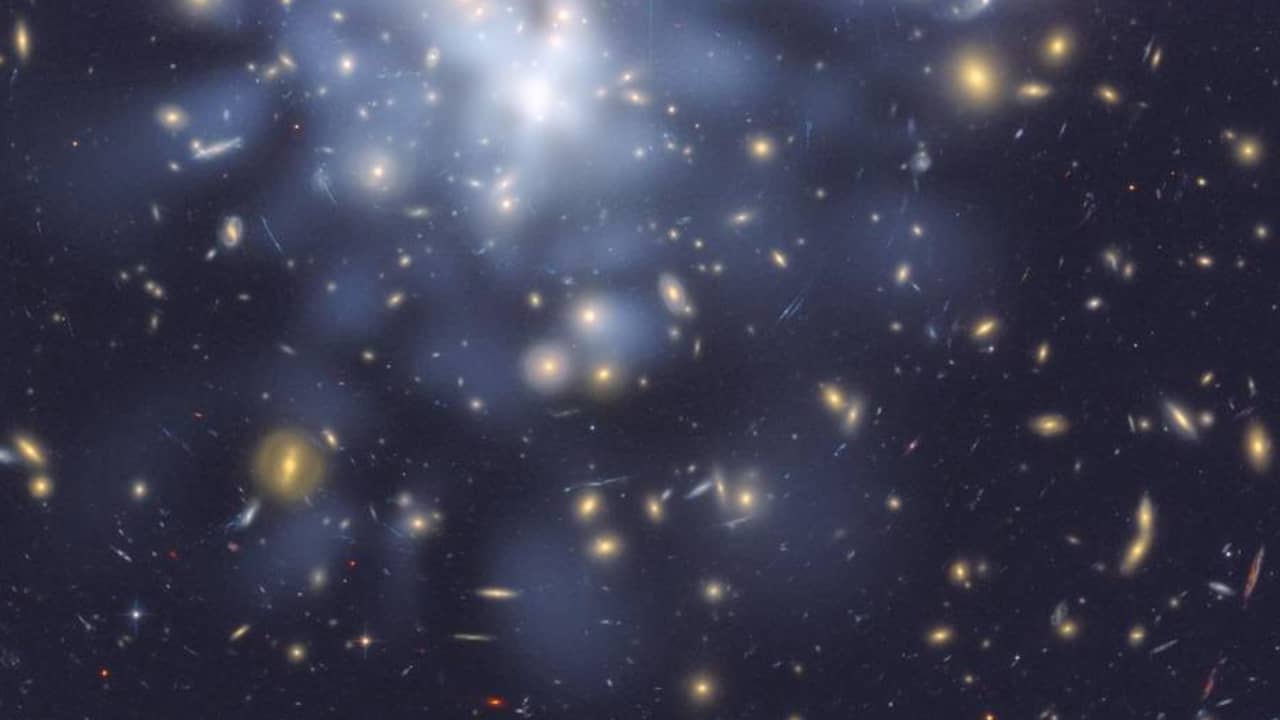Jul 14, 2023 at 2:00 PMUpdate: an hour ago
The James Webb telescope has observed three galaxies that may contain dark stars. This could help physicists explain why there are so many black holes in space.
Three American astrophysicists previously investigated the possible existence of dark stars. The birth of dark stars is driven by dark matter, scientists argue. That is special, because normal stars do not contain that dark matter.
The physicists list a number of characteristics of dark stars. For example, dark stars would be very old: they were probably born at the beginning of the universe.
In addition, like other stars, they are mainly made of hydrogen and helium, but they also contain dark matter. Furthermore, they may be much larger than normal stars and do not emit any light because nuclear fusion does not take place.
What is Dark Matter?
Unlike normal matter, dark matter does not interact with the electromagnetic field in space. That means that the matter does not absorb, reflect or emit light. This makes dark matter extremely difficult to detect.
Researchers can only deduce its existence from the gravitational effect that dark matter appears to have on visible matter.
Dark stars could be getting older and heavier
The scientists find these characteristics in the three galaxies that the James Webb telescope has spotted. The galaxies therefore do not fall within the traditional physical theories.
Nuclear fusion takes place in the interior of normal stars. As a result, light particles change into increasingly heavier particles until all the hydrogen and helium in the star are burned up.
When a star is no longer able to generate enough energy to maintain its shape, it dies and becomes a supernova or black hole. But because dark stars also contain dark matter, they become much older and therefore much heavier.
Receive notifications of new articles about the universe and space travelStay informed with notifications
Look further back in time with the James Web telescope
The heavier a star, the more likely it is to turn into a black hole. So, as dark stars age, they could potentially implode into supermassive black holes.
That would explain not only why there are so many black holes in the universe, but also why dark stars have never been found until now.
These stars are said to be billions of years old and many light years away. Until the launch of the James Webb telescope, we couldn’t look that far back in time.
2:00 Play button
2023-07-14 12:00:00
#James #Webb #telescope #finds #evidence #existence #dark #stars #Science


